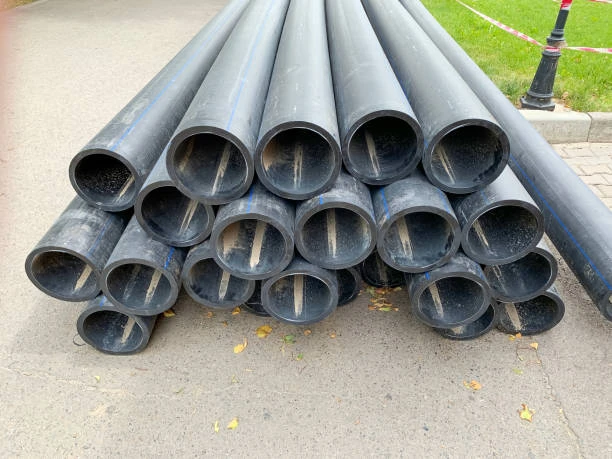The High-Density Polyethylene HDPE pipe market is on the brink of substantial growth, projected to increase by USD 6.13 billion from 2024 to 2028. This growth is primarily driven by the rising demand for efficient water supply systems worldwide. As urbanization accelerates and infrastructure development expands, HDPE pipes are becoming a preferred choice due to their durability and cost-effectiveness. Central to the effective implementation of these systems are pipe press fittings, which play a crucial role in connecting HDPE pipes securely and reliably. This article explores the factors fueling market growth, the benefits of HDPE pipes, and the essential role of pipe press fittings.

Understanding HDPE Pipe
High-Density Polyethylene (HDPE) pipes are made from a thermoplastic polymer known for its high strength-to-density ratio. These pipes are lightweight, flexible, and resistant to various environmental conditions, making them suitable for a wide range of applications, including water supply, sewage systems, and industrial uses.
Advantages of HDPE Pipe
- Durability: HDPE pipes are resistant to corrosion, chemicals, and environmental factors, leading to a longer lifespan compared to traditional materials like PVC or metal.
- Flexibility: The inherent flexibility of HDPE allows for easier installation, especially in areas with existing infrastructure or challenging terrain.
- Cost-Effectiveness: While initial costs may be higher than some alternatives, the reduced maintenance needs and longevity of HDPE pipes make them a cost-effective choice over time.
- Leak Resistance: HDPE pipes feature welded joints that significantly reduce the risk of leaks, which is critical for efficient water supply systems.
The Role of HDPE pipe
Pipe press fittings are integral to the successful installation of HDPE pipes. These fittings connect pipes quickly and securely, ensuring leak-free joints that enhance the overall reliability of the piping system. The benefits of pipe press fittings include:
- Quick Installation: Pipe press fittings can be installed rapidly without the need for welding or extensive tools, reducing labor costs and installation time.
- Enhanced Leak Prevention: The design of press fittings ensures a tight seal, minimizing the risk of leaks that can lead to water loss and inefficiencies.
- Versatility: Suitable for various applications, pipe press fittings can be used in residential, commercial, and industrial settings, making them an essential component in modern plumbing systems.
Factors Driving Market Growth HDPE pipe
1. HDPE pipe Increasing Demand for Water Supply
The global population is steadily increasing, leading to heightened demand for fresh water. As municipalities and industries invest in expanding and upgrading water supply systems, HDPE pipes have emerged as a preferred solution due to their efficiency, reliability, and long service life.
2. HDPE pipe Infrastructure Development
Many regions, especially in developing countries, are undergoing significant infrastructure development. Governments are allocating substantial resources to improve water distribution networks and sewage systems. This trend creates substantial opportunities for HDPE pipe manufacturers and suppliers.
3. Environmental Considerations
With growing concerns about sustainability, the demand for eco-friendly materials is on the rise. HDPE pipes are recyclable and have a lower environmental impact compared to traditional materials. Their durability also contributes to reduced waste over time, aligning with global sustainability goals.
4. Technological Advancements
Innovations in manufacturing processes and materials have improved the quality and performance of HDPE pipes. Furthermore, advancements in pipe press fitting technology streamline installation, making HDPE systems even more attractive to engineers and contractors.
Applications of HDPE Pipe
HDPE pipes are utilized in a variety of sectors, showcasing their versatility and reliability:
1. Water Supply Systems
Municipal water supply systems leverage HDPE pipes for their capacity to transport large volumes of water efficiently. Their long service life and minimal leakage rates make them a top choice for cities and towns.
2. Sewage and Drainage Systems
The corrosion resistance and durability of HDPE pipes make them ideal for sewage and drainage applications. They can withstand the harsh conditions often found in these systems, reducing the likelihood of failures.
3. Agricultural Irrigation
In agriculture, HDPE pipes are increasingly used for irrigation systems. Their flexibility allows for easy installation in varied terrains, optimizing water distribution and improving crop yields.
4. Industrial Applications
Various industries, including chemicals, pharmaceuticals, and food processing, rely on HDPE pipes for their ability to transport corrosive materials safely. Their strength and reliability are critical for maintaining operational efficiency in these sectors.
Future Outlook
The future of the HDPE pipes market appears bright, with sustained growth anticipated over the next several years. As countries continue to prioritize infrastructure improvements and sustainable water management, the demand for HDPE pipes and associated fittings will likely increase. Pipe press fittings will remain crucial in facilitating efficient installations, ensuring the integrity and reliability of water supply systems.
Conclusion
The projected growth of the HDPE pipes market by USD 6.13 billion from 2024 to 2028 reflects the increasing demand for effective water supply solutions in the face of urbanization and infrastructure development. Pipe press fittings play an essential role in this landscape, enhancing the efficiency and reliability of HDPE pipe systems. As industries and municipalities continue to focus on sustainable and efficient water management, HDPE pipes are set to become the standard in modern infrastructure.
Frequently Asked Questions (FAQs)
- What are HDPE pipe?
- HDPE pipes are high-density polyethylene pipes know for their strength, flexibility, and resistance to corrosion, making them ideal for various applications.
- What are pipe press fittings?
- Pipe press fittings are connectors use to join HDPE pipes securely, ensuring leak-free and efficient connections.
- Why is there increasing demand for HDPE pipe?
- The demand is drive by factors such as urbanization, infrastructure development, and the need for efficient water supply systems.
- How do pipe press fittings contribute to HDPE pipe installations?
- They facilitate quick and secure connections, minimizing the risk of leaks and enhancing the overall reliability of the piping system.
- In which sectors are HDPE pipes commonly use?
- HDPE pipes are widely use in municipal water supply, sewage systems, agricultural irrigation, and various industrial applications.


















